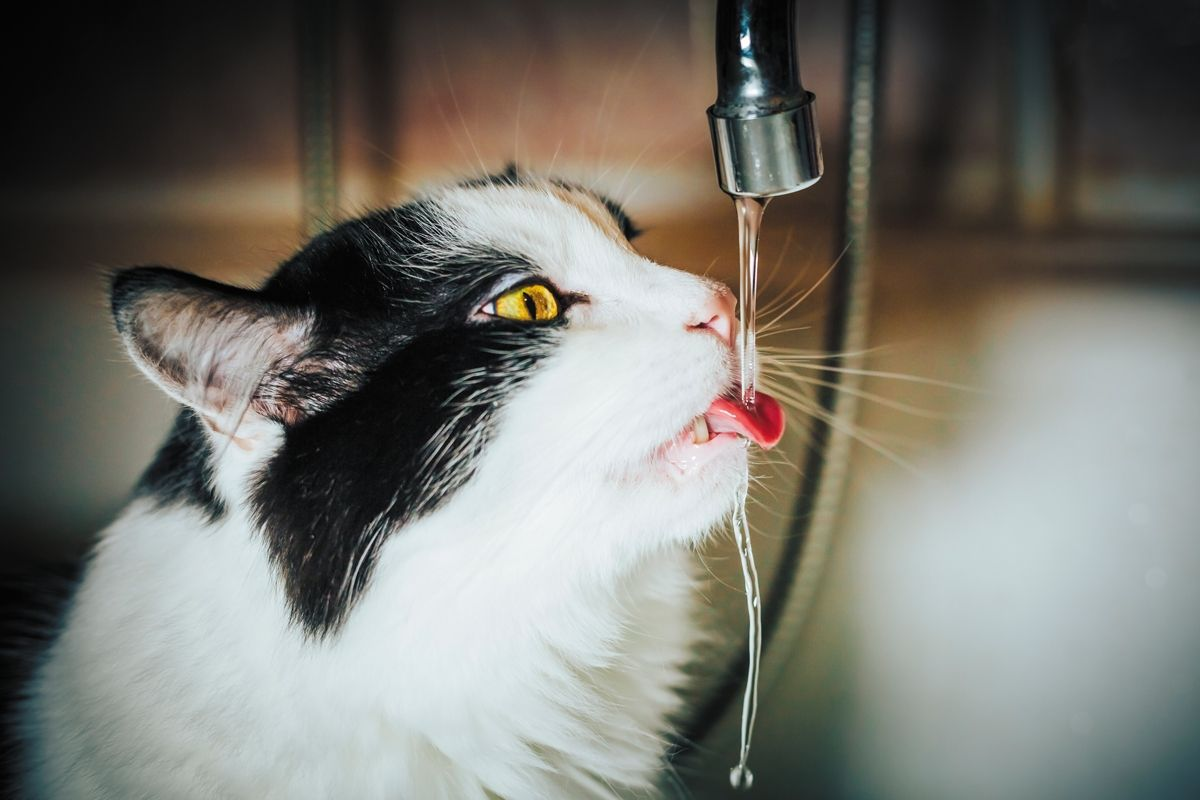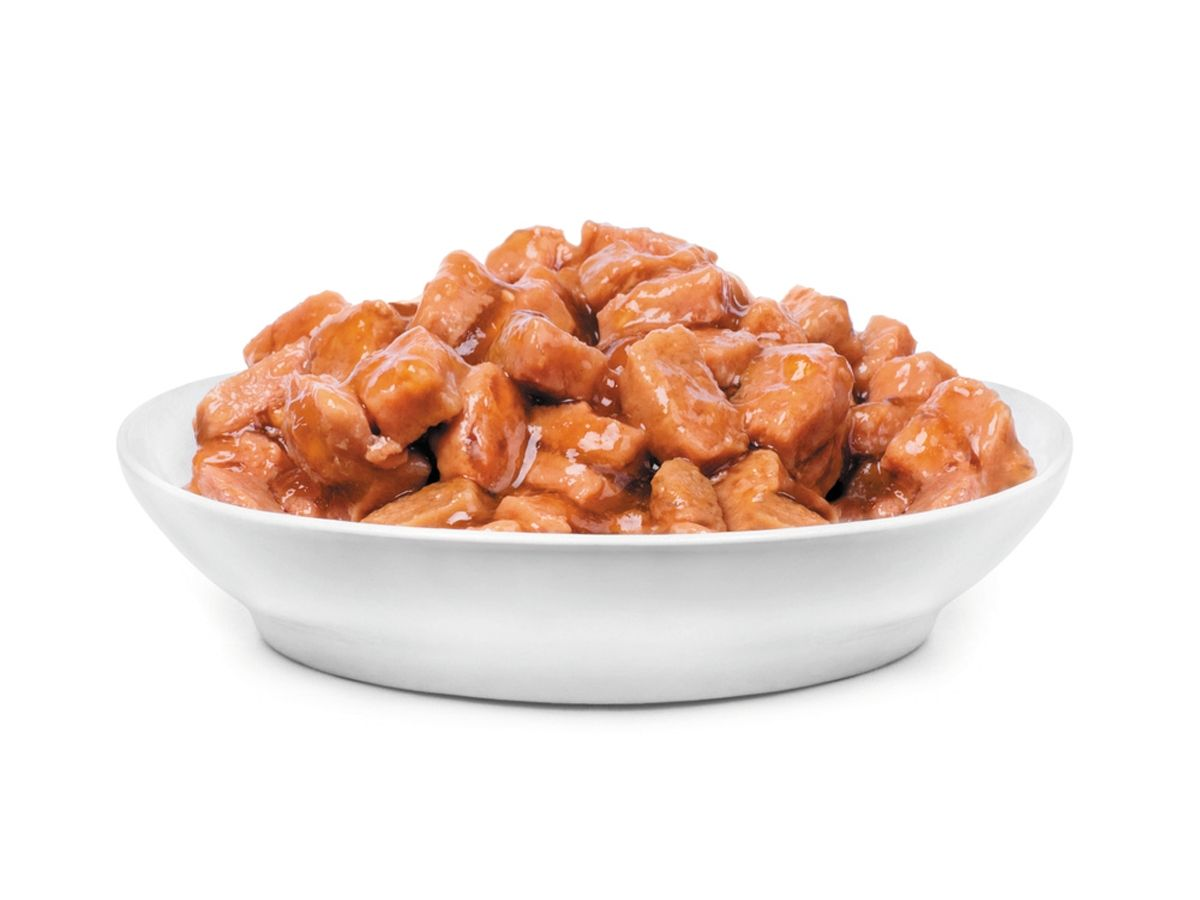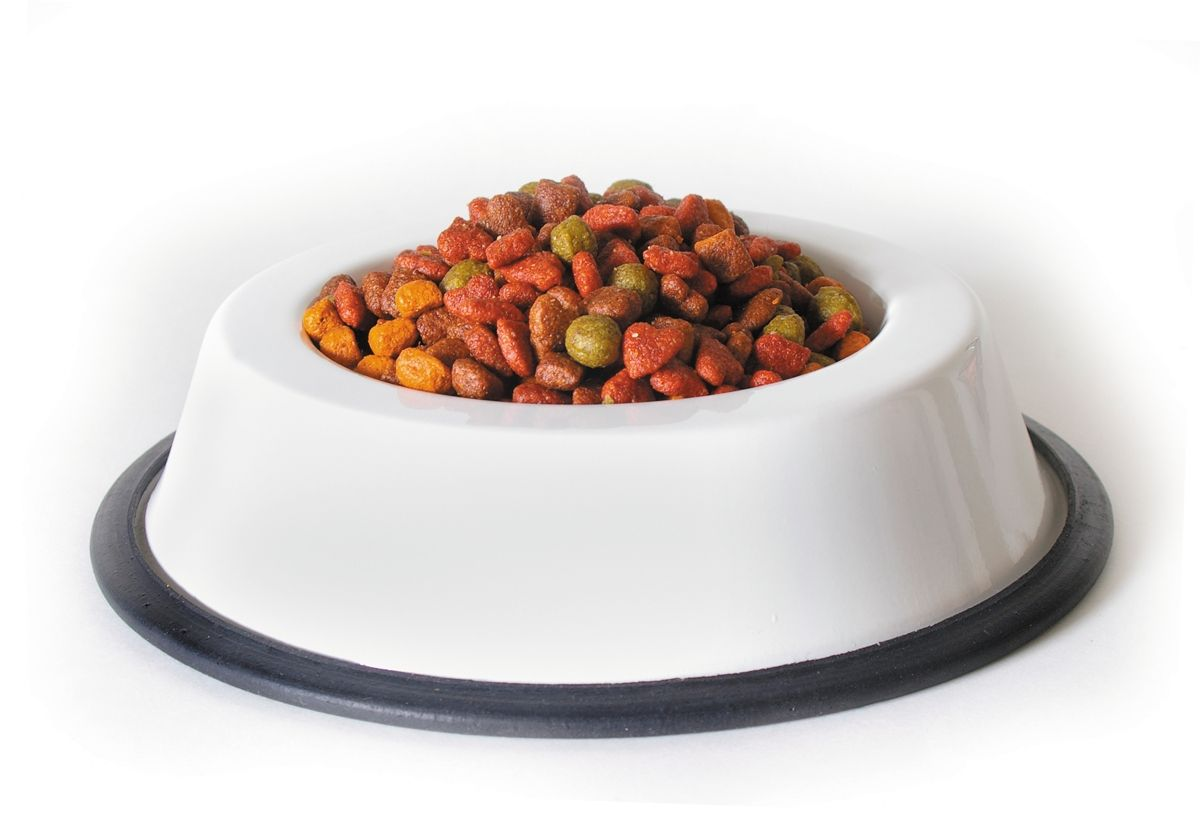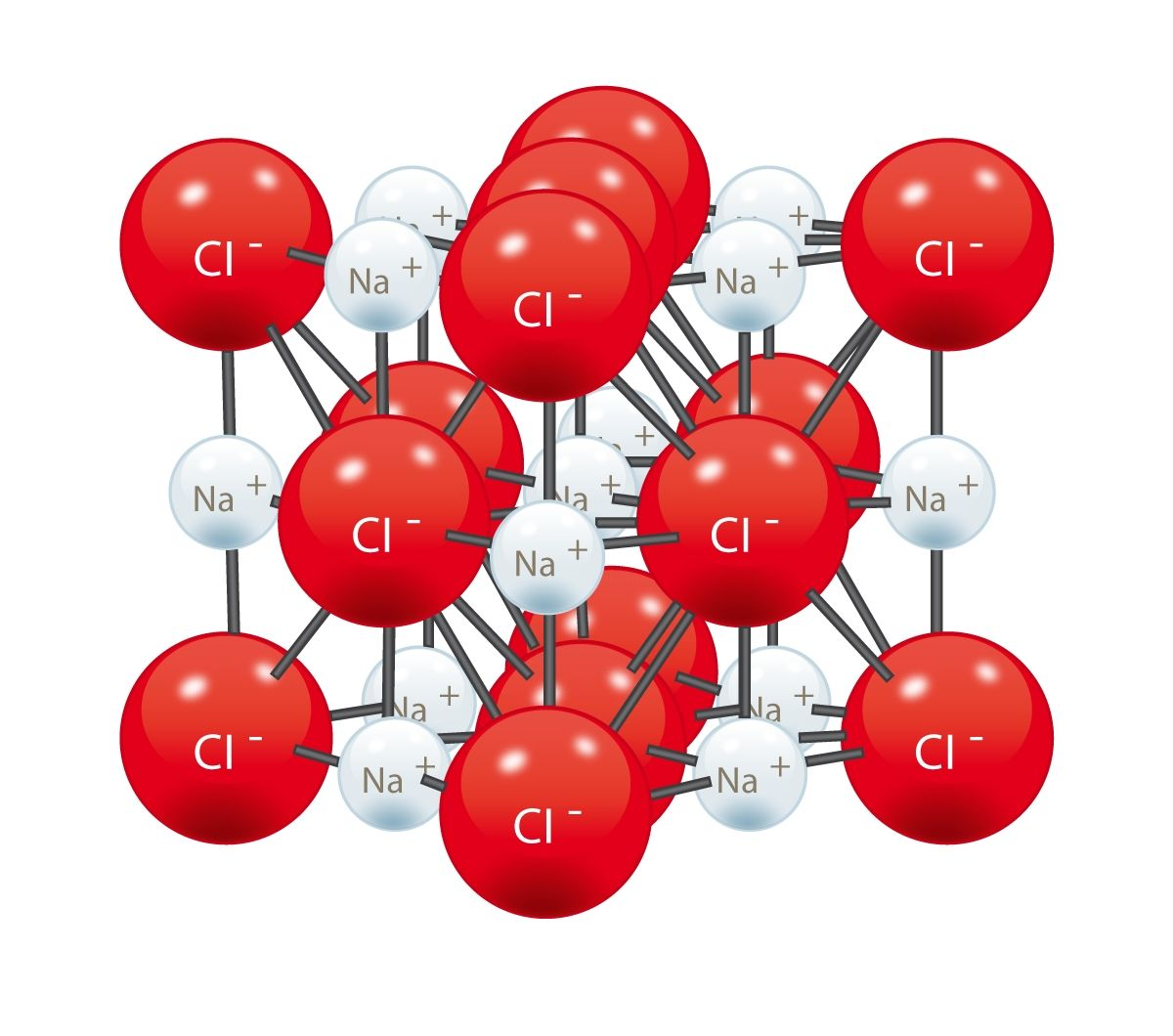Early screening for feline hematuria
Early screening for feline hematuria is now possible using a new product...
Issue number 29.2 Other Scientific
Published 10/10/2019
Also available in Français , Deutsch , Italiano , Español , ภาษาไทย and Українська
Prevention and treatment of urolithiasis in our feline patients requires a multi-factorial approach; here Cecilia Villaverde reviews one of the most important aspects, namely maintenance of a low urinary specific gravity, and suggests possible ways to achieve this.

Urolithiasis in cats can result in morbidity and even mortality for affected animals; the most common uroliths in cats are struvite and calcium oxalate.
Promoting urine dilution is one of the strategies recommended for all types of uroliths, with an aim of achieving a consistent urine specific gravity of 1.030 or lower.
Urine dilution can be promoted by various methods, including feeding high moisture diets or adding water to food to increase total water intake.
The use of sodium-enriched diets in some situations may be appropriate to help promote diuresis.
Urolithiasis is one of the most frequent causes of feline lower urinary tract disease (FLUTD). The most common uroliths in cats (more than 80-90%) are struvite (magnesium ammonium phosphate) and calcium oxalate, according to those submitted for analysis 1 2. Struvite stones were the most commonly reported urolith type until the mid-1990’s, but this has changed over time and currently calcium oxalate is the most frequent urolith found on analysis, with an incidence of 40-50%, closely followed by struvite 1 2. The reason for the increase in calcium oxalate and the decrease in struvite stones in cats is unknown, but might be related to alterations in some commercial diets implemented to prevent struvite stone formation. Such changes include varying diet composition to ensure a reduction in the magnesium content of the food and acidification of the urine 3.
Diet is undoubtedly important for both treatment and prevention of urinary calculi, and some specifically formulated diets can promote struvite stone dissolution and reduce its recurrence 4 5. On the other hand, calcium oxalate stones cannot be medically dissolved and, although we believe diet is important for prevention, its exact role is not yet clear, and there are a lack of clinical studies assessing the effect of dietary modification on their recurrence. The American College of Veterinary Internal Medicine (ACVIM) has produced a consensus statement on the treatment and prevention of canine and feline uroliths 6, although it is noteworthy that there is not general consensus amongst all Board Certified Veterinary NutritionistsTM regarding all recommendations made in this statement. However, most experts agree that struvite stones should be medically dissolved (unless contraindicated) with dissolution foods and/or medication.
Given the importance of diet for treatment and prevention of urolithiasis, it is essential to have reliable methodology to assess the effect of diet on urinary environment and composition. Crystallization – the initial step for stone formation – will occur when the urolith precursors are free (and in the correct chemical form) to react with each other, and are present in the urine at high concentration (i.e., the urine is supersaturated with these precursors). However, supersaturation alone is not the only factor that affects stone formation, because cats usually have urine supersaturated in calcium oxalates 7, but only a small percentage form uroliths.
Relative supersaturation (RSS) reflects the degree of urine supersaturation for a given crystal compound and has been used as a measure of stone risk in dogs and cats. Calculation of RSS 8 9 10 requires feeding a chosen diet to a cohort of animals for several days, followed by total urine collection to permit volume, pH, urine specific gravity (USG) and the concentrations of several crystallizing ions to be measured (Figure 1). The activity product of the crystal is compared to its solubility product using specialized software to obtain the RSS. The RSS value obtained for a given crystal will help separate the metastable from the supersaturation state.

Determining RSS is costly and complex to perform, and hence has been broadly restricted to research settings. In addition, RSS values have been determined mainly in healthy cats, and it is possible that results could be different in stone formers. We should therefore be cautious when extrapolating results from healthy cats to those with stone disease.
Data supports the fact that using diets promoting an RSS < 1 for struvite can result in stone dissolution 11 12 and studies suggest that RSS is a good indication of struvite dissolution dynamics 13. There is less data for calcium oxalate and for other non-struvite stones. Studies have shown that specifically formulated urinary diets can reduce the RSS for calcium oxalate into the metastable range in stone forming cats and dogs 14 15 (Figure 2). This suggests that diet plays a (significant) role in decreasing the risk of recurrence of calcium oxalate stones in affected patients but additional research is needed to help determine (or confirm) if this correlates with the desired clinical output, i.e., prevention or delay of recurrence 6.

The degree of urine dilution is one of the factors affecting the supersaturation of urine, and increased dilution is a mainstay in the treatment of urinary stone prevention in humans. Warmer climates have been identified as a risk factor for urolithiasis 16, which could be in part related to higher water losses. However, the etiopathogenesis of urolithiasis is complex, and it is therefore difficult to determine the importance of individual dietary modifications. There is a lack of research on the effect of promoting urine dilution by increasing water intake alone (independent of mineral content, urinary pH, and other dietary factors) but there is overall agreement that promoting urine dilution will reduce RSS and thus help reduce the risk of stone formation.
One epidemiological study – involving 173 cats with calcium oxalate uroliths, 290 cats with struvite uroliths, and 827 controls (with no urinary tract disease) – aimed to identify dietary risk factors for both struvite and calcium oxalate urolithiasis 17. They found that diets with the highest moisture content were associated with a lower calcium oxalate risk, but had no effect on struvite; however, this research has the usual limitations of retrospective studies, and other diet modifications might have affected these results. There are no prospective clinical studies on the effect of urine dilution alone in clinical outcome for stone forming cats.

The increased urine volume associated with urine dilution can help prevent stone formation by both reducing the concentration of precursors (Figure 3) and by increasing the frequency of urination, resulting in reduced mineral retention time in the urinary tract. Many review papers propose urine dilution/increased urine volume as one of the steps to prevent stone recurrence 3 18. Many clinicians recommend that management of uroliths, independent of their composition, requires urine dilution to reduce or prevent recurrence, and (as noted above) the aim is to achieve a USG of 1.030 or below in a consistent manner 6. In my experience, it is advisable to warn owners that the goal is actually to cause polyuria, and the litter box might require more frequent cleaning once strategies to decrease USG have been implemented.
Cats have the remarkable ability to concentrate their urine when fed diets low in moisture and/or have limited access to water; USG values of 1.065 and above have been reported 18. Compared to dogs, it is harder to achieve urine dilution in cats due to this potent concentration capability, but I will consider several options to promote water intake and subsequent urine dilution (Figure 4).

Stimulate water intake
|

Use wet foods
|

Add water to diet
|

Use salt-enriched diets
|
One of the safest methods is to increase water consumption by using canned high moisture foods or by adding water to dry food; this latter method can be a cost-effective alternative to purchasing wet diets. Studies have shown that high moisture intake increases urine volume and decreases USG 19 20. One study 21 involved six healthy cats which were fed 4 different diets; this consisted of the same base diet but with variable amounts of water added (to give a total moisture content of 6.3%, 25.4%, 53.3% and 73.3%). The diets were fed for three weeks on a crossover design, and water intake, urine production, USG, and RSS were assessed for each cat. The researchers found that increasing dietary moisture resulted in a decrease in consumption of drinking water. However, cats fed the highest moisture diet (73.3%) consumed more water overall (drinking water plus dietary water) compared to the other three diets. When the cats were fed this diet it resulted in a higher urine volume over a 24-hour period (86.7 mL on average) compared to the other diets. Moreover, the diet with the highest moisture resulted in lower USG (1.036 on average) compared to the other diets (1.052-1.054) and a decreased RSS for calcium oxalate, whereas there was no effect of diet on struvite RSS.
Another study 14 involved ten cats with calcium oxalate stones which had been fed various diets with differing nutrient composition but with a moisture content ranging from 9-18%. The cats were switched to a canned urinary diet with 78% moisture content. This tended to increase urine volume and decrease USG, and resulted in a significant decrease in calcium oxalate RSS. However, there were multiple differences between the original diets and the trial diet, and so the effects may be due to a combination of different dietary factors.
It has been recommended that urinary diets should have a moisture content of at least 75% 8. In my experience, aiming for a dietary moisture of 85% (Box 1) helps achieve a consistently low USG throughout the day, especially in recurrent cases. Not all cats will tolerate the addition of water on top of the food, so it is important to introduce this slowly, or to use high moisture diets that provide more than 80% moisture for these animals.
|
Goal moisture content is 85% = 85 grams of water per 100 grams of food
To re-calculate moisture once water is added to 100 grams of food, the formula is as follows, where x indicates the mL (or grams) of water added to 100 g of food
85% total moisture = [% moisture diet + x/100 g + x] x 100
|
|
Example with a dry diet (10% moisture)
85% = [10% + x/100 g + x] x 100
85/100 = [10 + x/100 + x]
0.85(100 + x) = 10 + x
85 + 0.85x = 10 + x
75 = 0.15x
500 = x
Per 100 grams of dry food, add 500 mL (approx. 2 cups) of water (1:5 weight, 1:2 volume)
|
|
Example with a wet diet (70% moisture)
85% = [70% + x/100 g + x] x 100
85/100 = [70 + x/100 + x]
0.85(100 + x) = 70 + x
85 + 0.85x = 70 + x
15 = 0.15x
100 = x
Per 100 grams of wet food, add 100 mL of water (1:1 volume)
|
Dry diets can also reduce the RSS for struvite and calcium oxalate 7 in the urine of healthy cats by modification of other dietary factors affecting stone formation, such as pH and concentration of precursors and inhibitors. Some dry diets may also result in lower RSS by using methods other than water intake to promote diuresis, such as salt-enriched diets.
It is important to be aware that adding water changes a diet’s palatability and texture that can lead to a cat refusing to eat. It also reduces energy density, which may cause unwanted weight loss in normal weight or thin cats, or those with picky appetites. If water is added to kibble this can lead to spoilage if the food remains in the bowl for any length of time, and softening the kibble can also mean that the dental benefit (i.e., mechanical scrubbing of the teeth) is lost.
Some dry diets formulated for feline urolithiasis have higher levels of sodium (up to 3.5 g/1000 kcal) than average maintenance diets (which are around 1 g/1000 kcal or less). High sodium foods can promote urine dilution by stimulating diuresis 22. The retrospective study mentioned previously that assessed dietary risk factors for feline struvite and calcium oxalate urolithiasis 17 identified that diets lower in sodium had a higher risk for calcium oxalate stone formation. Again, the result has to be taken with caution, since this correlation can be affected by other factors and does not imply causation.
A long-term study in cats – conducted over a two-year period – assessed the effect of a high sodium diet (3.1 g/1000 kcal) vs. a control diet (1 g/1000 kcal) on renal parameters, blood pressure and urinary parameters 23. The treatment diet did not negatively affect renal parameters or blood pressure, and it did decrease USG compared to the control diet, but only at the 3-month mark, which suggests that the effect of high salt diets on promotion of diuresis might not be sustained long term. One abstract 24 reported a positive effect on urine volume with a high salt diet fed to healthy cats after two weeks, but no differences were detected on USG or RSS for calcium oxalate or struvite; these results were similar to another study, also with healthy cats and of three weeks’ duration 25. Both studies were short term and involved only a small number of cats.
The high sodium approach cannot be used in cats with salt-sensitive diseases (e.g., renal or cardiac pathologies) out of caution, and it is not to be recommended for urate or cystine stones. There is concern about high sodium diets promoting calciuria, but short-term data in healthy cats 25 suggest that even though renal calcium excretion can increase, urinary calcium concentration might remain unaffected due to the concurrent effect of salt on increasing urine volume.
It is important to obtain more prospective research on the effect of sodium-enriched diets on USG, RSS, other urinary parameters, and clinical outcomes. Whilst the ACVIM consensus statement recommends the use of high moisture diets over high sodium diets 6, these may be an option when clients cannot afford, or refuse the use of, high moisture diets.
Common advice to clients with stone-forming cats includes promotion of water intake. This may be achieved by using running water (such as water fountains), flavored water, additional water bowls/stations, and the use of specific materials for the water bowl 26. I find that flavoring water with a maximum of 15 mL of fluid – using either water from cans of tuna or chicken broth (homemade or, if commercial, without garlic or onion) – per 500 mL bowl can be successful. However, there is a lack of research supporting the efficacy of these measures on urine dilution and on clinical outcomes. The effect of different water presentation systems on the RSS of calcium oxalate and struvite, USG, urine osmolality and urine volume of colony cats has been assessed 27. The methods compared were: still, circulating, and free-falling bowl systems, which were used for two weeks in a crossover design study. There were no differences in RSS, average water intake, urine volume or USG. Osmolality was higher in cats where circulating water was offered compared to still or free-falling. Moreover, the lowest USG found in the study was 1.044, which is still too high for stone prevention.
This study failed to show that the use of water fountains can affect urine dilution. However, some of the cats in the study showed a strong preference for a specific bowl, thus it is important to offer different options to our patients to identify individual preferences. This also applies to the material and shape of the drinking container. The water bowl(s) should be placed in a clean, odorless location, and separate from the litter tray and food. Multiple water stations located in different parts of the home could potentially be helpful, and will ensure the cat has access to water at all times.
In cats with stone disease, long-term follow-up is important to minimize recurrence. At the very least, this will allow for early detection of uroliths and the use of relatively non-invasive methods for stone removal if necessary. The frequency and the type of tests performed for the follow-up (urinalysis, imaging, culture, etc.) will vary depending on the individual case (type of stone, association with infection, co-morbidities, previous episodes, etc.) and the client’s budget.
Cecilia Villaverde
With regard to urine dilution, the most common method used in daily practice is measuring USG with a refractometer; dipstick measures of USG are unreliable. Owners can purchase a refractometer, or the clinician can perform this test with urine obtained by the client, with non-absorbable litter employed for urine collection at home. The first assessment should be 4-6 weeks after the preventative measures have been started. The urine should always be obtained at the same time of day for each follow-up, since USG will vary over a 24-hour period; for example, the first urine of the day can be more concentrated than samples taken later in the afternoon.
If the USG is not in the desired range (i.e., < 1.030), it is important to check compliance with the recommended treatment (diet, medications, addition of water, etc.). If compliance is good, the use of a diet with higher moisture than the current one (or adding more water on top) is indicated until the USG is within the acceptable range. If not previously attempted, owners should be encouraged to use more than one water station and figure out the preferred drinking method of their cat (i.e., size and material for the bowl, still or running water, flavored or non-flavored water).
Diet choice in cats with stone disease will vary depending on the specific stone, goal (dissolution vs. prevention), presence of co-morbidities, previous episodes, and client finances. However, in all cases the diet chosen should promote urine dilution, either by being high moisture or (if not contraindicated) high in salt. If the diet does not meet either requirement, water should be gradually added to the diet. For all strategies, I advocate a slow introduction to maximize acceptance and avoid common problems of sudden diet transition, such as diarrhea. Long-term regular monitoring of the urine is mandatory to ensure the patient’s health remains optimal. Ultimately, however, it is important to recognize that RSS is still very much the most critical factor for controlling stone formation in cats, and any program designed to aid an at-risk patient must be holistic in its nature.
Cecilia Villaverde
Dr. Villaverde obtained her veterinary degree and her PhD from the Universitat Autònoma de Barcelona and then completed a residency in small animal nutrition Read more
Early screening for feline hematuria is now possible using a new product...
Feline idiopathic cystitis is one of the most common problems encountered in small animal practice...
Most practices will have access to an ultrasound machine...
Although urinalysis is a routine and everyday test for…
